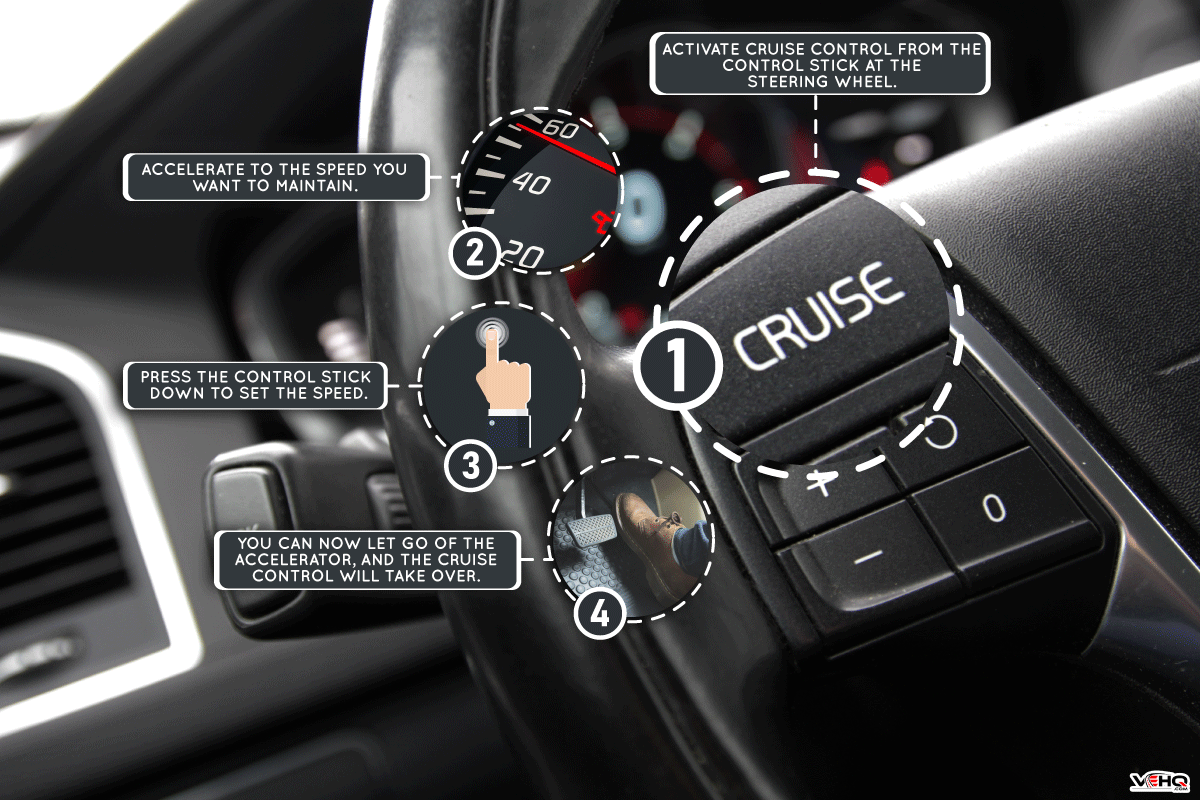Table Of Content

Another potential cause for your cruise control not resuming speed could be throttle control issues. The throttle control system regulates the amount of air entering the engine, which directly affects the vehicle’s speed and acceleration. Remember, it’s essential to address cruise control issues promptly as they can affect your driving experience and convenience.
How much does it cost to fix cruise control malfunctions?
Another example of open loop control systems is a vehicle driving on a road. In this case we’ll consider that the input is the engine torque, the system is the vehicle itself and the output is the vehicle speed. The driver is adjusting the engine torque (input) by pressing the accelerator pedal. Last up on our list of the most common reasons cruise control might not be working is a broken cruise control cable.
BMW's next-gen adaptive cruise control stops at traffic lights - CNET
BMW's next-gen adaptive cruise control stops at traffic lights.
Posted: Tue, 25 Jun 2019 07:00:00 GMT [source]
Cruise Control Not Resuming Speed
Build It Make It then lists a broken brake light switch as being the next most common reason. A faulty shifter actuator is listed as the next most common fault cause. This is a lock to ensure you’re not gear shifting when you don’t have the brake engaged. Since the car cannot detect which gear you’re in, it will deactivate the cruise control as a safety measure. One possible reason for the cruise control not engaging is a defective cruise control module. This module is responsible for controlling the cruise control system and ensuring that it functions properly.
YourMechanic Auto Repair

The cruise control function reads the current vehicle speed and increases the engine torque in order to compensate for the road gradient. This way the vehicle speed is kept constant regardless of the disturbance. This means that the vehicle speed is no longer controlled by the driver, through the accelerator pedal position, but by the engine control module. The cruise control function keeps a predefined vehicle speed (set by the driver) regardless of the road conditions, by adjusting the engine torque. Due to the fact that the input (engine toque) wasn’t adjusted function of the vehicle speed or road gradient, the system’s response was affected. This can be seen as an open loop, where the driver didn’t adjusted the accelerator position in order to keep a constant vehicle speed.
This electrical system allows you to set a predetermined speed and take your foot off of the gas pedal. If you are on a long drive, there is less fatigue because you don’t have to try to maintain your speed. Cruise control can also benefit fuel economy because the vehicle uses less fuel when traveling steadily. If there is an issue with a speed sensor, it will often show with an ABS warning light or a check engine light on the dashboard. When a sensor fails, the cruise control can stop working and the speedometer might act strange as well.
Engine or transmission problems may automatically lead to the disabling of cruise control - especially if it's of the ETCS type. This could mean the CCM cannot be communicated with, potentially disabling cruise control entirely. This article is for informational purposes ONLY and is NOT a replacement for professional advice! ALWAYS consult your local specialist for an appropriate solution to your problem. Please contact the service provider for complete details and updates.
A front-wheel-drive car with spinning tires will attempt to continue in a more or less straight line--which will make steering control dodgy at best. Cruise control is a system to maintain vehicle speed without direct driver input. When you want to engage cruise control, you first turn the system “On” with a button or switch.
Reasons Why Your Cruise Control Stopped Working
Hyundai Sonata Adaptive Cruise Control Review: How Well Does the Tech Work? - MotorTrend
Hyundai Sonata Adaptive Cruise Control Review: How Well Does the Tech Work?.
Posted: Thu, 18 Mar 2021 07:00:00 GMT [source]
It lets you travel at a constant speed and reduces the pressure on your foot caused by frequent gas pedal pressing. The controller integrates all the inputs and tells the servo how far to actuate the throttle plates. Normally, there is no way you can service this item, so if you trace a problem to the controller, you'll have to buy a new one.
The feedforward traction force is added with the nominal 300 N force. The value of the feedforward force is interpolated between 0 and 10 °. First we’ll describe the forces acting on the vehicle driving on a road with gradient. In an open loop control system the input (control action) doesn’t depend on the output of the system. Regardless of how the system behaves, the input signal is independent of the system’s response.
We hope this article helped shed some light on why cruise control might not be working in your car. Now that you know why your cruise control might not be working, you’re probably wondering if it’s something you can handle on your own. In most cases, you’ll need to replace the switch if it’s not working correctly.
Both radar and cameras are important components of the adaptive cruise control system. When there’s dirt, debris, or ice covering these sensors, your cruise control can stop functioning. To prevent this, regularly clean your vehicle’s sensors, making sure they’re unobstructed.
The CC control unit monitors this switch as it does the brake light switch. The input of the system (plant) will be the combined action of the PID controller and the nominal 300 N traction force. We do this because we know that in order to have a constant vehicle speed of 55 kph we need a traction force of 300 N. The PID controller will only compensate for the deviations of the measured vehicles speed. In this scenario, the control loop is open because the input (traction force) was not adjusted to compensate for the road gradient disturbance. We can have an open loop control system which can adjust it’s input based on known disturbances.
If your cruise control buttons are located on the steering wheel it could also be caused by a bad clock spring, which is located behind the steering wheel. Your cruise control system is attached to a fuse that can blow if there is a short circuit or fault. The cruise control actuator circuit may be protected by fuses or relays.

No comments:
Post a Comment